Yucatan Monica Sauza
Hammocks… let’s relax
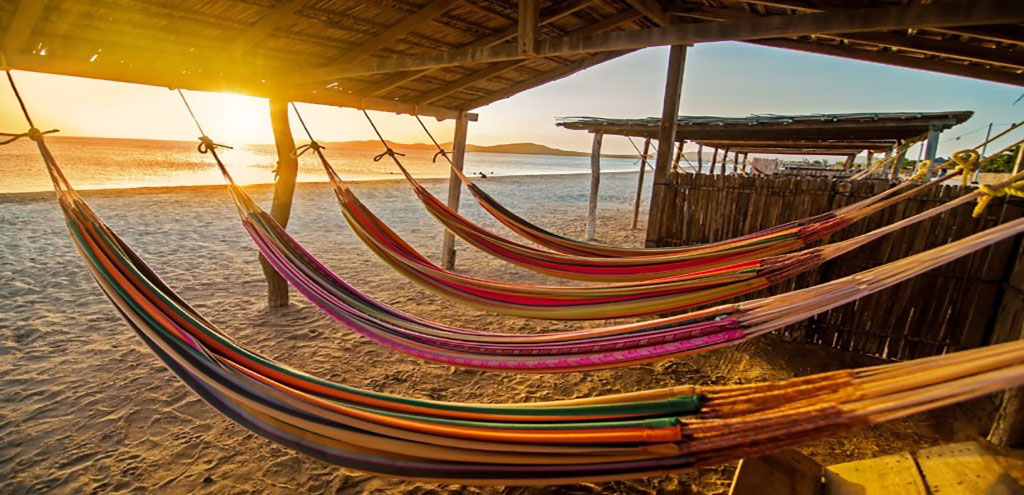
by Mónica Sauza
Whether you have comfortably slept all night on one or had a nice nap or used it as a sofa or swing, or to rock a baby to sleep, or just relax on it while at the beach or in a beautiful natural setting, this net of interwoven threads has an interesting history that is tightly intertwined in the culture of those who were born in or were adopted by the Yucatán Peninsula.
Hammocks are an important part of the identity and cultural heritage not only of the Yucatán Peninsula where the State of Quintana Roo is but of other Caribbean, Central and South American countries well. Nowadays, here and in many places around the world it has replaced the bed because of its coolness and comfort.
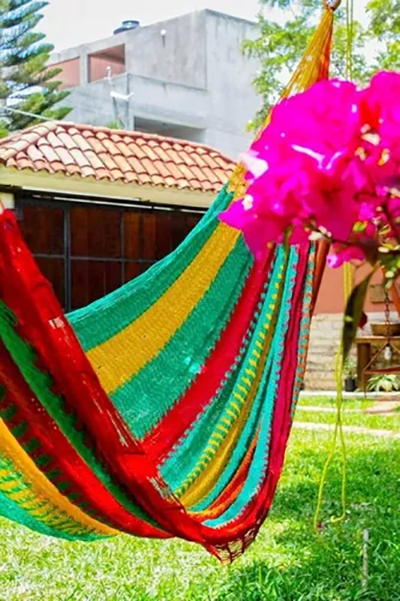
The origins of the hammock are a bit unclear. Some sources pose that the word means ‘tree’ (Haitian) as the first ones were made from the bark of the hamack tree, others say it means ‘fish net’ (Taino arauk language), or chinchorro (woven net in Venezuela and Colombia), among others.
While a hypothesis published by Pacarina del Sur online magazine places its origins in the Mayan Empire which extended all the way to Central and South America, some historians place them with the Taino who lived where we now know as the Bahamas, two centuries before the arrival of Christopher Columbus. These were the first people he made contact with in 1492 when arriving to America, the New World (or The Americas, as expressed in English).
When the Spanish friars arrived at Yucatan they described how Mayas slept on rough beds made of rods and a mat on the top; and they soon learned how to knit hammocks. The names given to it by the maya are hayabil k’aan (twine strings to lie down), yaab-kaan (many twine strings), y’ab k’an (wind bed), or only k’aan [source, Pacarina del Sur]. The hammock made its way to Europe and was quickly adopted by seafarers switching the ships’ rough beds to a preferred way of sleeping on hammocks made out of rough materials.
Currently you can find many styles: artisanal, bohemian, macrame or crochet woven, woven as chairs, etc.; however, hammocks are mainly representative of the Mayan history, culture, and region beautifully and colorfully handmade by master artisan hammock knitters and are worldwide renowned for their materials which have long evolved from rough nets, plant fibers and sisal to cotton, silk or nylon, wood, and plastic, and even other materials. Truth be told, highly recommended for our Cozumel’s very warm summer nights. Surely the hot weather is one of the reasons why several countries in the northern hemisphere commemorate July 22 as Hammock Day and as the universal relaxation symbol.
So, if you have yet to try one don’t miss the opportunity to treat yourself with a pleasant rest in a traditional Mayan hammock.
Hamacas … vamos a relajarnos
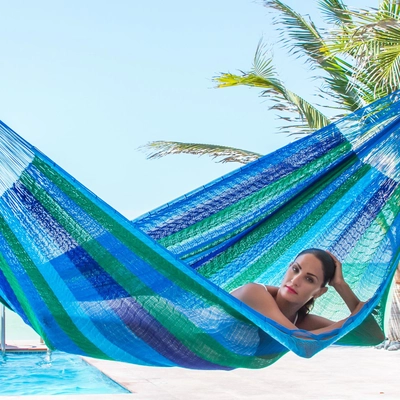
por Mónica Sauza
Ya sea que haya dormido cómodamente toda la noche en una o una agradable siesta, o la haya usado como sofá o columpio, o para mecer a un bebé hasta que se duerma, o simplemente para relajarse en ella en la playa o en un hermoso entorno natural, esta red de hilos entrelazados tiene una historia interesante que está estrechamente entretejida con la cultura de quienes nacieron en o que fueron adoptados por la Península de Yucatán.
Las hamacas son parte de la identidad y patrimonio cultural no sólo de la Península de Yucatán, donde se encuentra el Estado de Quintana Roo, sino también de otros países del Caribe, Centro y Sudamérica.
Hoy en día, aquí y en muchos lugares del mundo ha sustituido a la cama por su frescura y comodidad.
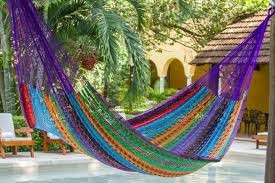
Los orígenes de la hamaca son un poco confuses. Algunas fuentes plantean que la palabra significa ‘árbol’ (del haitiano) ya que las primeras se fabricaban con la corteza de árbol hamack, otras fuentes señalan que significa ‘red de pescado’ (lengua arauk de los taínos), o chinchorro (red tejida, en Venezuela y Colombia), entre otros. Mientras que una hipótesis publicada por la revista digital pacarina del Sur sitúa sus orígenes en el Imperio Maya que se extendía hasta América Central y del Sur, algunos historiadores las sitúan con los taínos quienes habitaban en lo que hoy conocemos como Bahamas, dos siglos antes de la llegada de Cristóbal Colón.
Estos fueron los primeros habitantes con quienes tuvo contacto en 1492 al llegar a América, el Nuevo Mundo (o Las Américas como se expresa en inglés). Cuando los frailes españoles llegaron a Yucatán, describieron cómo los mayas dormían en duras camas hechas con varas y una estera encima; y pronto aprendieron a urdir hamacas. Los nombres en maya son hayabil k’aan (cordeles para tenderse), yaab-kaan (muchos cordeles), y’ab k’an (cama de viento), o sólo k’aan [fuente Pacarina del Sur]. La hamaca llegó a Europa y fue rápidamente adoptada por los marinos que cambiaron sus toscas camas en los barcos por una forma más adecuada para descansar.
En la actualidad se pueden encontrar de muchos estilos: artesanales, bohemias, tejidas en macramé o crochet, en forma de sillas, etc.; sin embargo, hay que recordar que representan principalmente a la cultura y región maya hechas a mano de manera hermosa y colorida por maestros artesanos tejedores y que son mundialmente reconocidas por sus materiales que desde hace mucho tiempo han evolucionado desde ásperas redes, fibras vegetales y henequén hasta llegar al algodón, seda o nylon, madera y plástico, y hasta otros materiales.
La verdad sea dicha, son muy recomendables para las calurosas noches de verano de Cozumel. De seguro el clima caluroso es una de las razonas por las que varios países del hemisferio norte conmemoran el 22 de julio como el Día de la Hamaca y como símbolo universal de relajación.
Así que, si aún no ha probado una, no se pierda la oportunidad regalarse un descanso placentero en una tradicional hamaca maya.
Otra fugitiva de la Ciudad de México. Mónica ha hecho de Cozumel su hogar definitivo. Desde su llegada en 1981, trabajo en turismo en todos los lugares habituales: hoteles, buceo, aeropuerto, ferries, hasta que se abrió la oportunidad de desempeñarse en su campo. Desde finales de la década de los años 70 Mónica ha estado traduciendo e interpretando, dedicándose plenamente a ello a partir de 1998, y ha asistido a extranjeros y locales de la Isla a establecer su residencia y sus negocios. Es traductora con gran experiencia, ávida historiadora y una gran fuente de tradiciones y leyendas locales.
- Mexican History 3 Kings Day - January 8, 2025
- 2025 Mexican National Holidays - January 3, 2025
- Mayan Weather Predictions - January 2, 2025
Another escapee from Mexico City, Monica has made Cozumel her definite home. Since her arrival -in 981- she worked in tourism in all the usual venues: hotels, scuba diving, airport, ferries, until the opportunity to practice in her chosen field grew. Since the latter part of the 70s Monica has been translating and interpreting, fully devoting herself to it since 1998, and has assisted foreigners and Island residents establish residence and businesses- She is a Translator with extensive experience, an avid historian and a great source of local lore and legends. Otra fugitiva de la Ciudad de México. Mónica ha hecho de Cozumel su hogar definitivo. Desde su llegada en 1981, trabajo en turismo en todos los lugares habituales: hoteles, buceo, aeropuerto, ferries, hasta que se abrió la oportunidad de desempeñarse en su campo. Desde finales de la década de los años 70 Mónica ha estado traduciendo e interpretando, dedicándose plenamente a ello a partir de 1998, y ha asistido a extranjeros y locales de la Isla a establecer su residencia y sus negocios. Es traductora con gran experiencia, ávida historiadora y una gran fuente de tradiciones y leyendas locales.
Punta Celarain Cozumel History
Punta Celarain Cozumel History Punta Celarain and the Celarain Lighthouse Both Bear...
Significance May 1 May 5 Mexico
Significance May 1 May 5 Mexico The Significance of May 1 and...
Cozumel Museum
Cozumel Museum Cozumel’s “Museo de la Isla” Celebrates 38 Years Cozumel’s...
Feria Cedral Schedule
Feria Cedral Schedule La Feria de El Cedral & La Fiesta...









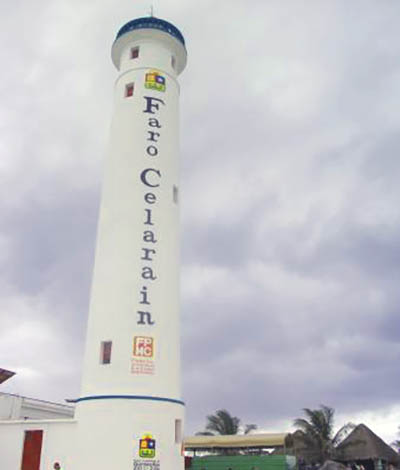
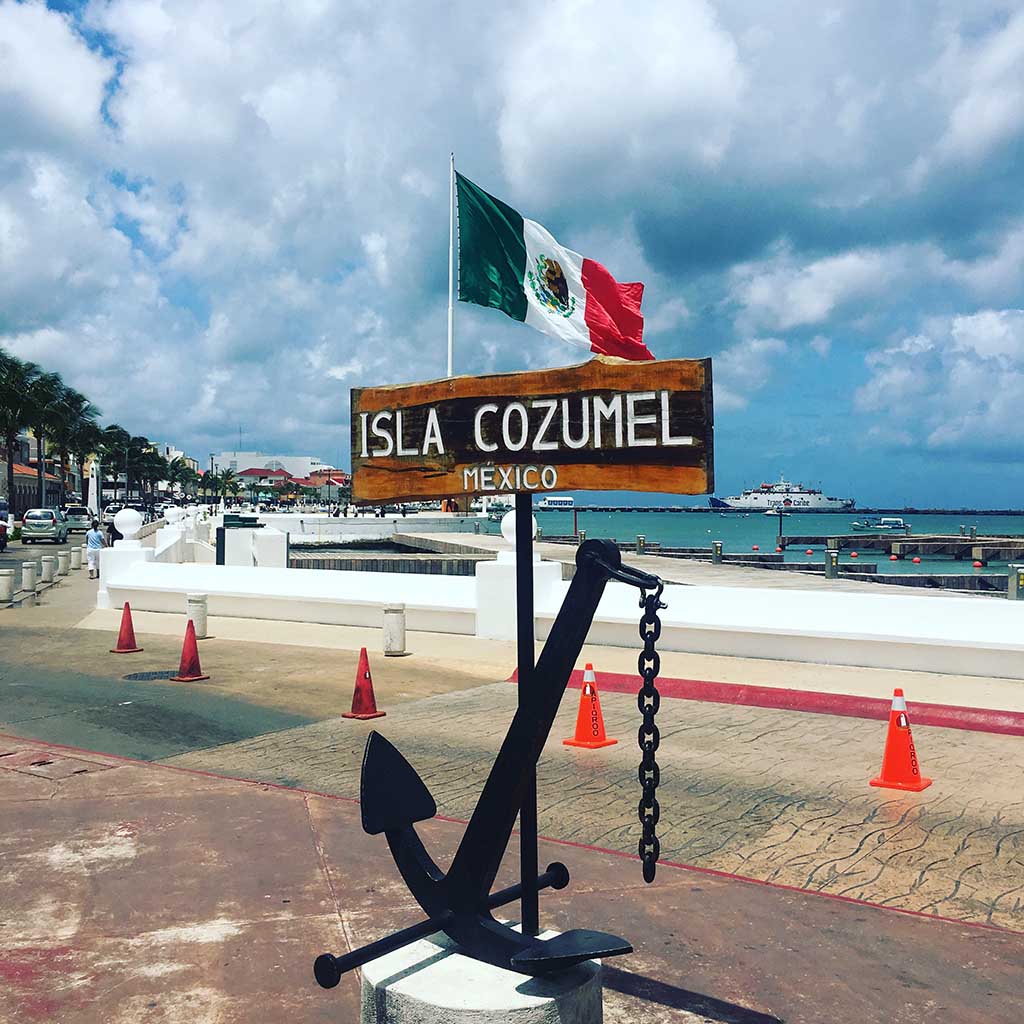
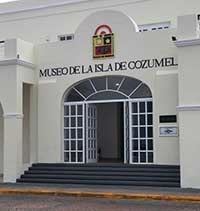
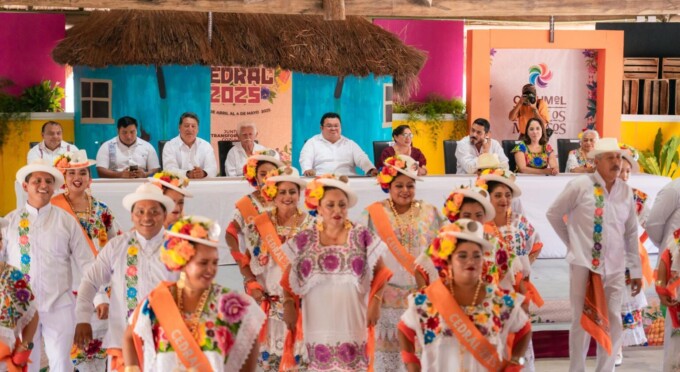





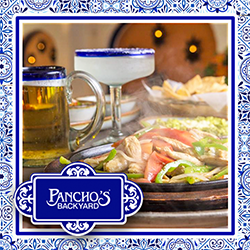

Leave a comment